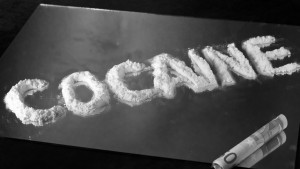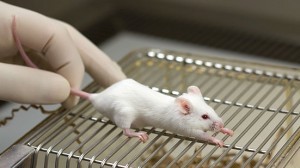Life ruining brain disease ruins lives

(Sloshspot.com 2016)
Saying that drug addicts can just stop being addicted to drugs is similar to saying that people with depression can suddenly decide to stop feeling depressed.
“Everyone should know this stuff” Level
Do you ever wonder why drug addicts don’t just stop taking drugs? There is a gross misconception that dealing with drug addiction is a matter of willpower. Saying that drug addicts can just stop being addicted to drugs is similar to saying that people with depression can suddenly decide to stop feeling depressed. Drug addiction is not only a matter of determination or desire, and to say that it is an oversimplification of a deeply, complex issue.
Drug addiction is actually a complicated brain disease that distorts learning and memory (Bai 2011). This distortion of learning and memory is connected to the strong urge drug addicts feel to seek out drugs, often at the cost of other needs or functions (Bai 2011). Scientists have been experimenting using mice in order to further understand drug addiction, and the scientific reason behind why drug users are compelled to use more drugs.

(Newcastle University 2016)
Scientists experimenting with mice have been able to show that cocaine, and other illicit drugs that alter the levels of dopamine in the brain, physically change the brain (Anwar 2013). Neuroscience is able to support the idea that the use of drugs causes the brain to create lasting associations between objects, places, and people, and the drug abused (Bai 2011). These associations caused by drugs like alcohol and cocaine are what make it so difficult for people suffering from drug-addiction to get better, as an addict can be “triggered” by a person or place reminding the addict about the euphoria experienced while abusing a drug (Bai 2011).
These reward-based associations are created by dopamine, an important chemical for brain function. Drugs similar to cocaine, and cocaine itself, block the ability of the brain to regulate the level of dopamine, creating an effect similar to synthesizing a large amount of dopamine, which results in intense feelings of sexual desire, aggression, and euphoria (Deans 2011). Cocaine specifically works by allowing dopamine to remain in the synapses for a longer period of time than normal (Goodman 2016). Dopamine is a neurotransmitter that helps neurons in the brain communicate by telling neurons to produce a signal if a rewarding experience occurs (Deans 2011). A rewarding experience that would trigger this signal could range from eating chocolate, having sex, or abusing certain drugs (Mandal 2015). Dopamine, however, does moderate how often these signals of reward are fired, which is why humans are generally able to control their desires and cravings (Deans 2011). Imagine, if dopamine did not moderate these signals of reward and humans felt pleasure and euphoria all the time? Even harmful events like getting hit by a two-ton truck would feel good, and humans would not be able to recognize that there was an issue with their bodies or brains.
After the feeling of heightened euphoria that comes with cocaine abuse is over, the levels of dopamine attempt to go back to normal. The brain senses a decrease in dopamine compared to the large amount dumped in the brain after the use of cocaine, and tries to return to its natural levels of dopamine (Goodman 2016). The user then feels a rush of unpleasant emotions such as anxiety, paranoia, and depression (Goodman 2016). Because cocaine causes such a feeling of euphoria and pleasurable emotions, the brain begins to create a reward-based association based on the use of cocaine, further fueling a desire to use (Bai 2011). Don’t forget, the reason that the feeling of euphoria after using cocaine is so strong is because it disturbs the natural balance of dopamine in the brain, but this natural balance is what allows humans to have a rewarding experience and not feel compelled to re-experience it. Drug addiction is about an insurmountable impulse, created and enforced by the brain, to reproduce a memory in which drug use resulted in a powerful state of pleasure.
“For geniuses only” Level
But why does the use of cocaine and other illicit drugs create such a strong reward-based association between use and pleasure? A joint study between UC-Berkeley and UC-San Francisco shows that cocaine causes the development of dendritic spines, which help with learning and memory (Norris 2013). Learning and memory are based on the brain’s ability to create connections between neurons and synapses (Bai 2011). Dendritic spines are important structures in the brain that acts as circuits, connecting neurons (Anwar 2013). It has been shown that cocaine can overwrite the ability of the user to fulfill other needs in order to get more cocaine, which is correlated to the growth of new dendritic spines, in parts of the brain that control learning and memory, caused by injecting cocaine (Anwar 2013). Cocaine directly affects the brain cells that control decision-making, causing the brain to focus its efforts around seeking and using cocaine (Norris 2013). Long-term cocaine addicts have been noted to have brains that excel at seeking out cocaine, but at the cost of other functions in the brain and other needs (Norris 2013).
The development of dendritic spines has also been linked to ‘drug-associated learning’ in mice (Norris 2013). Drug-associated learning means that the cocaine-using mice were more likely to go back to the compartment where they were given cocaine, versus mice injected with saline, a harmless solution, which were not focused on returning to the compartment where they received saline (Norris 2013). This points to a strong memory that had developed because of the use of cocaine meaning: the mice began to associate a specific compartment with receiving cocaine, causing the mice to seek out cocaine in that compartment.
The dendritic spines most likely cause these strong drug-associated memories, which might compel the user to seek the drug, fueling drug addiction (Norris 2013). These changes in the brain, like the development of lots of dendritic spines, would explain why drug users have issues paying attention to anything not related to the drugs, and why thoughts of obtaining more cocaine control the decision-making part of the brain (Anwar 2013). Essentially, drug-addiction is a complicated brain disease resulting from the use of drugs that alter the brain, compelling the user seek out said drugs, at the cost of other functions. The reason why drug addicts cannot just stop seeking or using drugs, is because their brains literally force them to focus on seeking and using drugs.
Impress your friends and family with these three related facts:
Fact 1: The use of alcohol produces even stronger drug-associated learning(Bai 2011).
Fact 2: Issues with dopamine production have been linked to several brain disorders such as Attention-Deficent Hyperactivity Disorder (ADHD), depression, bipolar disorder, and Parkinson’s Disease (Deans 2011).
Fact 3: The world’s cheapest gram of cocaine can be bought in countries near the Andes Mountains, like Colombia, Peru, Bolivia, and Brazil, while Australia and New Zealand have the most expensive cocaine prices (Smith 2015).
Author: This article was written by Inaya Payne-Wilks ’16 of Choate Rosemary Hall in Wallingford, CT. Inaya’s spirit animal is the jellyfish. Someday Inaya will be famous for owning a cat cafe.

Works Cited
Anwar, Y. (2013). Cocaine’s effect on mice may explain human drug-seeking behavior. University of California-Berkeley. (Date Accessed: January 29, 2016). http://news.berkeley.edu/2013/08/25/miceoncocaine/
Bai, N. (2011). Mouse Study Suggests Why Addictions Are Hard to Forget. Scientific American. (Date Accessed: January 29, 2016). http://www.scientificamerican.com/article/mouse-study-suggests-why/
Deans, E. (2011). Dopamine Primer. Psychology Today. (Date Accessed: February 18, 2016). https://www.psycholoDeans, E. (2011). Dopamine Primer. Psychology Today. (Date Accessed: February 18, 2016). https://www.psychologytoday.com/blog/evolutionary-psychiatry/201105/dopamine-primer
Goodman, B. (2016). Cocaine in your brain. Macalester College. (Date Accessed: January 29, 2016). http://www.macalester.edu/psychology/whathap/UBNRP/Dopamine/cocaine.html
Mandal, A. (2015). Dopamine Functions. News-Medical.net. (Date Accessed: February 25, 2016). http://www.news-medical.net/health/Dopamine-Functions.aspx
(NCSACW) Nation Center on Substance Abuse & Child Welfare (2016). Physical and Psychological Effects on Child Abuse. NCSACW. (Date Accessed: January 31, 2016). https://www.ncsacw.samhsa.gov/files/TrainingPackage/MOD2/PhysicalandPsychEffectsSubstanceUse.pdf
Newcastle University (2016). Intravenous Injection in the Mouse. (Date Accessed: February 22, 2016). http://www.procedureswithcare.org.uk/intravenous-injection-in-the-mouse/
Norris, J. (2013). Cocaine Use Leads to Rapid Brain Growth of New Mouse Brain Structures. University of California- San Francisco. (Date Accessed: January 29, 2016). https://www.ucsf.edu/news/2013/08/108326/gallo-center-study-mice-links-cocaine-use-new-brain-structures
Sloshspot.com (2016). History of Cocaine. (Date Accessed: February 22, 2016). http://www.sloshspot.com/blog/History-of-Cocaine
Smith, P. (2015). The World’s Highest (and Lowest) Cocaine Prices. Alternet.org. (Date Accessed: February 15, 2016). http://www.alternet.org/drugs/worlds-highest-lowest-cocaine-prices

Leave a Reply